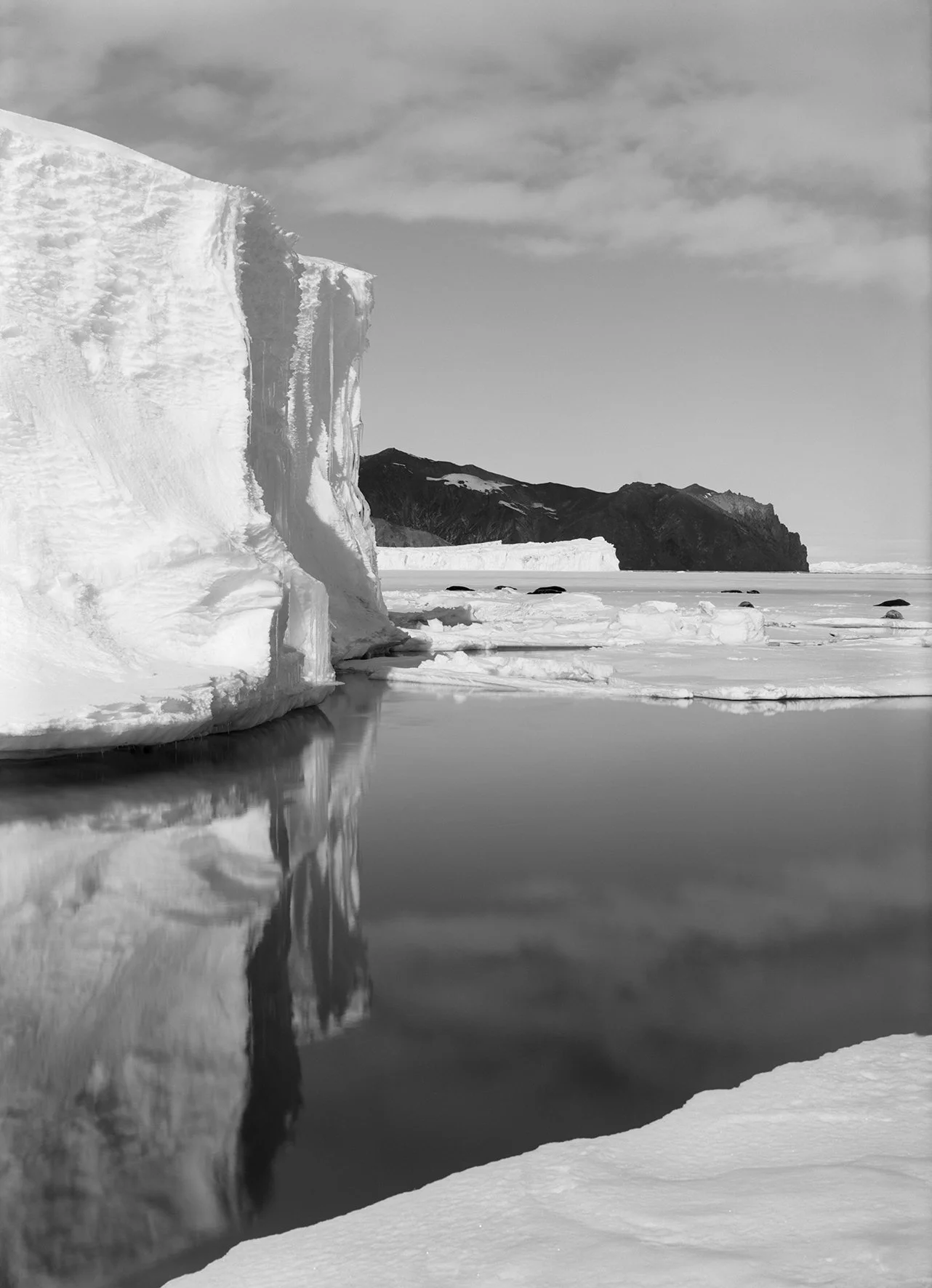BRITISH ANTARCTIC (TERRA NOVA) EXPEDITION 1909–1913
The photographs of Herbert Ponting
Our platinum-palladium prints of Herbert Ponting’s Terra Nova photographs are produced from the original negatives conserved in the collections of the Scott Polar Research Institute, University of Cambridge.
The Terra Nova expedition, during which Captain Robert Falcon Scott and his party perished on their return from the South Pole, is among the most important expeditions of Antarctica’s ‘Heroic Age’, when explorers first wintered in Antarctica and ventured into the continent’s vast, ice-covered interior. Accounts of the expedition went on to become classics of polar literature, whilst the photographs taken by Herbert G. Ponting remain some of the most compelling visual records in the history of human exploration.
Among the most renowned travel and nature photographers of his day, Ponting was recruited by Scott as ‘camera-artist’ for the Terra Nova expedition. Although he did not take part in the trek from the wintering hut at Cape Evans to the South Pole, Ponting’s mission was to capture photographs that would document the expedition, introduce Antarctica to the wider public, and, importantly, help to recoup some of the venture’s debts through publication fees.
Working mostly with glass plate negatives, and occasionally with celluloid film, Ponting photographed every facet of the Terra Nova expedition, from portraits and shipboard life to the frozen landscapes and wildlife that surrounded the men through the long Antarctic winter. Imbued with a quiet romanticism, the result was some of the most technically accomplished and aesthetically influential photographs ever captured in Antarctica.
Through its exclusive collaboration with the Scott Polar Research Institute, Salto Ulbeek has revisited Ponting’s original negatives and printed them, for the first time, using the platinum-palladium process. The result is a series prints of unprecedented quality that not only transport viewers to the very heart of the Terra Nova story, but also achieve a depth, tonal nuance, and permanence that Ponting himself could only have imagined.
All prints are produced in Salto Ulbeek’s atelier in Belgium. For full details on the availability of edition numbers and sizes, please select the Enquire button and share the title of the print or prints that have you are interested in.
Print Sales
Limited Edition Platinum Palladium Prints. Available in 3 sizes:
MEDIUM FORMAT
65 x 53cm (paper size)
From 3.094,00 €
LARGE FORMAT
95 x 75cm (paper size)
From 4.879,00 €
MASTER PRINTS
120 x 90cm (paper size)
PLEASE ENQUIRE
Prints are stamped by Artist’s Estate and include a certificate of authenticity.
© Scott Polar Research Institute, University of Cambridge
© Salto-Ulbeek
Not fit enough to take part on the inland trek to the South Pole, Ponting left Cape Evans onboard the Terra Nova in February 1912 and headed back to London where he worked on a visual narrative of the expedition for Scott to present during lectures on his return. But this was not to be. Scott and his four companions perished on their return from the Pole. Despite the tragedy, Ponting’s photographs were widely disseminated and admired. An agreement signed prior to the expedition, however, meant that he did not have exclusive ownership of his work. Instead, it was his written account of the expedition, The Great White South, that proved his most profitable work.
Following his participation in the Terra Nova expedition, Ponting largely abandoned photography and turned to business, but a number of unsuccessful ventures saw him loose much of the money he invested. By 1930 his health began to deteriorate. He died indebted in London in 1935.


